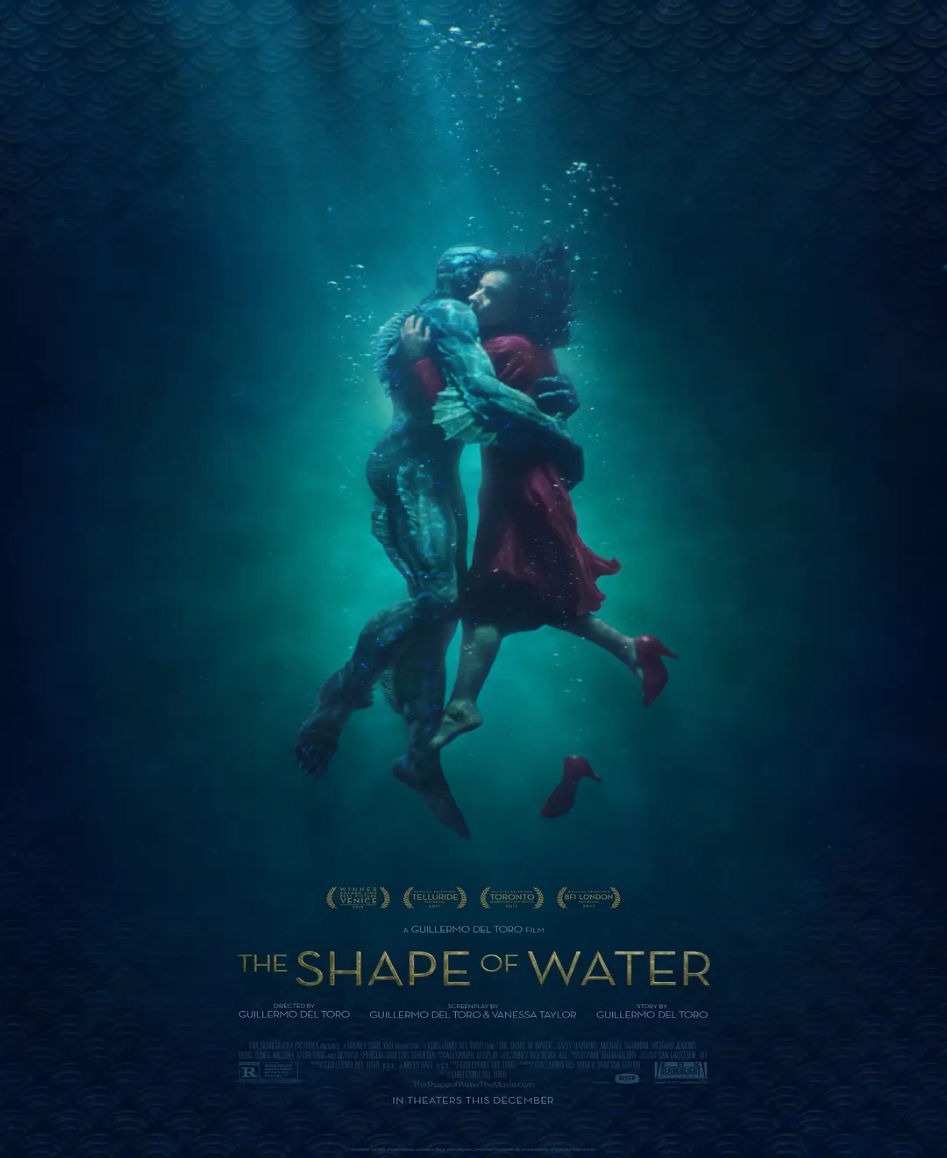From Venice to awards season, Guillermo del Toro’s “The Shape of Water” has been in the spotlight all the way. Gyro gently tells this fairy tale fable about mermaid love in an almost retro tone, and has made one of the most beautiful films of 2017. Gyro’s films have always been known for their dark and rotten fairy tale style, and he has always made monsters the most important protagonists in his films since he was a child with a love for all kinds of monsters. From “Pan’s Labyrinth”, “Pacific Rim” to “Scarlet Peak”, Gyro has always moved between commercial production and art films. This film, “The Shape of Water,” has also become the best rated work of his directing career.

After winning consecutive Critics’ Choice Awards and Golden Globes for Best Director, with a Directors Guild Award nomination in hand, Gyro is one step closer to the Oscars. His speech at the Golden Globes was incredibly heartfelt: “Over the past 25 years, I’ve brought my own emotions and crafted some strange little stories with my own hands. These films, these fantastical stories have also saved my life.”
Gyro conveys a pure magic in “The Shape of Water Without Words,” as if leading us away from his big-budget films “Pacific Rim” and “Scarlet Peak” and back to a more crafted creative period like “The Haunted Children’s Home” and “Pan’s Labyrinth”. It is a dark fairy tale drenched in the magic of retro cinema, bringing the viewer a watery texture of images. This uniquely charming quality combines the morally corrupt American portraits of the 1960s with third-person narration to tell us a simple story of love and friendship.
Unnoticed by the crowd, Gyro implants the social reality of the early 1960s – the limited inclusiveness of non-humans is nearly the same as it is for gays and blacks. Whether it’s the unintentional flashes of black riots on TV or the inhumane abuse at the Institute, it all evokes the horror of the Cold War.The main character, Elisa, a mute janitor played by Sally Hawkins, has always lived her life in a distant relationship with her surroundings, the only close one being her chatty colleague Zelda. He also lost his job as an advertising planner because of an inexplicable scandal.
Whether it’s the mute Elisa, her black colleague Zelda, or her gay best friend Zelda, they are all, like the mermaid, alienated by mainstream society. The identity of Gyro’s Mexican origin also gives him a deep understanding of what it is like to be ostracized. With a beautiful vision of reality, Gyro pours his love into these underprivileged characters in the movie. They report to each other for warmth and resist the darkness of the world together.Despite her hearing, Elisa is unable to speak and can only communicate with others through sign language. As an orphan, she relies on her intuition and senses for most of her interactions with others. When Elisa first meets a mermaid, it is not fear she feels, but empathy. Instead of hate and fear, she chooses to embrace this cross-species creature with love.
The beauty of “The Shape of Water”, on the other hand, is due to the team’s superb set design. After “Scarlet Peak”, Gyro once again shows a deep understanding of this gothic horror picture. This exaggerated elemental design and overburdened plot seems to suppress the most sincere emotions of the story itself, making the flatness of the characters more prominent. However, through the team’s dazzling production and elegant art of film-making, coupled with a first-rate cast, the story instead presents both sides of the angels and demons.Director Gyro is always good at using simple colors to match the main vision of the movie, just like the use of a lot of blood red elements in “Scarlet Peak”, “The Shape of Water” chooses aqua blue as the main color and makes the maximum use of green shades. The beginning of the film is filled with dark blue-green, however, as the heroine’s feelings for the mermaid gradually warm up, Gyro chooses to match it with warm red. From the choice of high heels to coats, you can see the transformation of the heroine’s state of mind from aloof to bright and cheerful.
Elisa and the mermaid in the water sex scene can be said to be the highlight of the film, with the underwater shots and the cheerful soundtrack touched the extremely dreamy texture. This scene comes from the 1954 monster movie “Black Lake Demon Tan”, in fact, the story of “The Shape of Water” is also completely inspired by this, in the words of Gyro himself: “This is the most poetic picture I’ve ever seen”.Similar homage stems to fan film elements are not few and far between in the film. Gyro not only recklessly uses the 60s setting, but also borrows from 50s horror films and 30s and 40s film scores, giving the film itself an epic level of foundation. These implants allow the audience to better empathize with the story and characters, rather than simply piecing them together.
The first thing the mermaid did when she escaped from her home was to go to the movie theater, which was showing The Book of Ruth (1960) at the same time as another film, Mardi Gras Day (1958). It is also worth mentioning the performance of Sally Hawkins, her mute girl in this film is extremely convincing and infectious, without lines, just through her sign language or a look, is enough to show the character’s full of emotion. Whether it’s the boldness in the face of intrigue or the frankness in the face of love, you can feel the warmth and strength projected by this girl-hearted character. If the previous Gyro was a bloody fantasy, my key word for “The Shape of Water” is soft. This overgrown child uses his most sincere child’s heart to complete the exploration of love, and you just need to click the play button, you can definitely fall into this tender.
